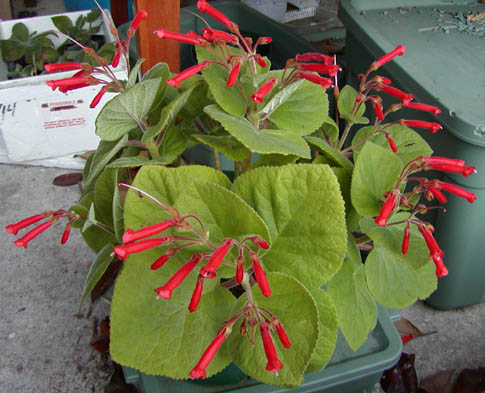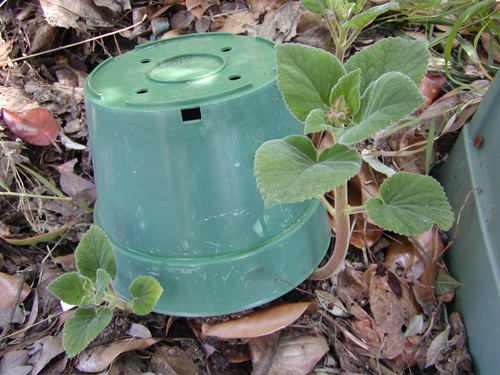I must admit I have some reservations about the identification of this plant.
All the other hybrids I have made with
S. reitzii and
S. "Black Hill"
have leaves which are at least somewhat dark green; none of the others have the
bright cardinalis-type green that this one has.
Another source of doubt is the determinate growth.
I have two three-species hybrids whose ancestry is 1/4 indeterminate and
3/4 determinate, yet are indeterminate, suggesting that the indeterminate
habit is very dominant.
This plant has one indeterminate parent (S. reitzii) and one
determinate parent (S. cardinalis), yet is determinate.
That makes me wonder.
Yet another point: most S. reitzii hybrids retain at least
a stub of the stem on the tuber when they go dormant.
This plant does not.
The deciduous stems separate cleanly from the tuber.
The cross was done so long ago that I have no way of assessing how
accurate I was about identifying it.
I don't even know which species was the seed parent (although it is
pretty clear that this plant has
S. cardinalis in its ancestry).
If the second parent isn't S. reitzii,
it would have to be something
with peduncles -- perhaps S. lineata.
Obviously, I should repeat the cross.
My misgivings about its heredity notwithstanding,
this is an excellent plant.
It blooms heavily and has a much tidier growth
habit than S. cardinalis,
despite being quite a bit larger.
|

